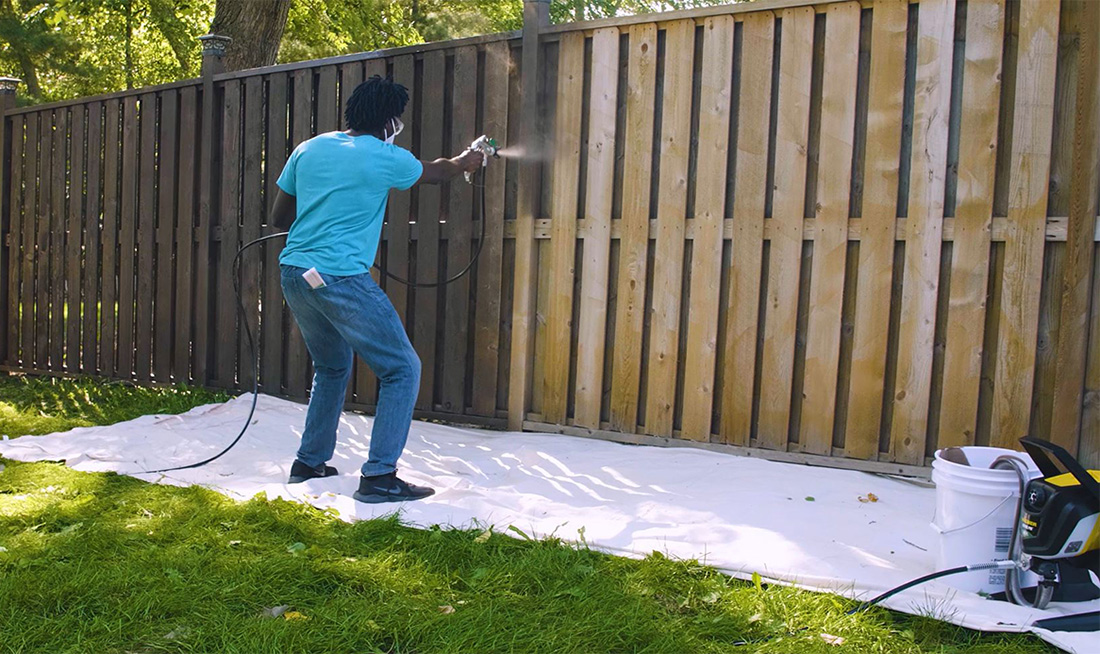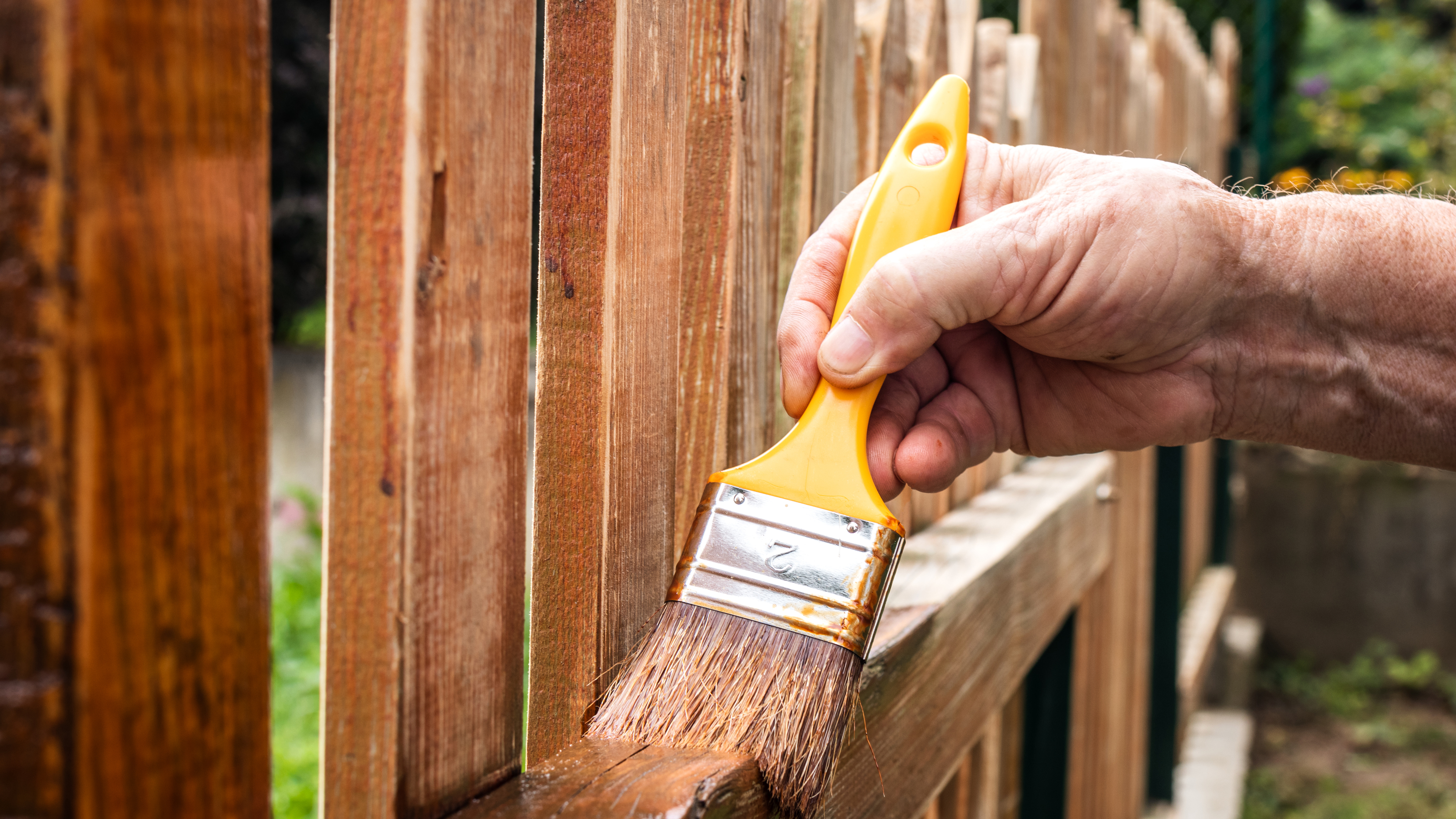Get Your Fence Summer-Ready with Top-Notch Fence Staining Services!
Wiki Article
Just How to Pick the Right Fence Spot for Your Property
When it pertains to improving the appearance and longevity of your building's fencing, picking the ideal tarnish is an essential choice that needs cautious consideration. With a myriad of choices readily available on the market, each accommodating various timber kinds, shades, and transparency levels, the process can promptly come to be frustrating. Making an informed selection can significantly influence the overall aesthetic appeals and durability of your fencing. Just how can you guarantee that you pick the best fencing tarnish that aligns with your property's design and maintenance requirements? Let's explore some crucial elements to lead you in this decision-making procedure.Comprehending Wood Types
To select the ideal fence tarnish, it is necessary to have a detailed understanding of the various kinds of wood commonly utilized for fencing. The selection of wood plays a crucial duty in figuring out the durability and overall visual appeals of the fencing. Cedar is a prominent choice because of its natural resistance to degeneration and pests, making it a long lasting alternative for outside structures. Pine is another usual wood used in secure fencing, understood for its price and simplicity of staining. However, yearn is much more vulnerable to bending and deteriorating contrasted to cedar. Redwood is a high-end choice recognized for its striking appearance and all-natural durability, though it includes a greater price. When selecting a fence discolor, it is vital to consider the type of wood being made use of to make sure compatibility and ideal defense. Understanding the qualities of various timber kinds will certainly help you make a notified choice when it comes to selecting the best fencing discolor for your home - Fence Staining Nashville TN.Choosing the Right Color
Choosing an appropriate tone for your fencing tarnish is a vital choice that substantially influences the overall aesthetic charm of your home. Lighter shades such as whites or light grays can make a fence appear larger and include a touch of elegance to your building. Ultimately, the ideal shade choice will improve the appeal of your fencing and elevate the overall curb allure of your home.
Considering Transparency Levels
When selecting the right color for your fence discolor, one more crucial aspect to take into consideration is the level of transparency that will best fit your residential or commercial property's aesthetic and upkeep needs. Openness degrees in fencing spots normally fall under three groups: transparent, semi-transparent, and strong. Transparent discolorations enable the natural beauty of the wood to reveal with while providing marginal protection versus the components. They are optimal for brand-new or well-kept fences where showcasing the wood grain is a top priority. Semi-transparent stains use an equilibrium in between shade improvement and defense, allowing some timber grain to be noticeable while offering moderate securing from UV rays and wetness. Solid discolorations, on the various other hand, give the most security as they entirely cover the wood with a nontransparent coating. These are appropriate for older fencings or those seeking substantial security or color modification. Think about the level of exposure your fencing encounters, the preferred upkeep frequency, and the visual you want to achieve when selecting the ideal openness level for your fence tarnish.Evaluating Upkeep Demands
Thinking about the long life and maintenance of your fence, evaluating the maintenance requirements is crucial in determining one of the most appropriate fence discolor for your home. The degree of upkeep needed for your fence can vary relying on elements such as the sort of wood, weather problems in your location, and your personal preferences.When reviewing upkeep requirements, it is essential to think about the sturdiness of the fencing discolor. Some discolorations need more regular reapplication than others, so picking a stain with a longer lifespan can help reduce the general upkeep needs of your fencing (Fence Staining). Furthermore, elements such as resistance to UV rays, water, and mold can affect how often you need to re-stain your fence

Testing Examples Prior To Application
Before applying any type of fencing discolor, it is a good idea to perform sample tests to ensure compatibility with the wood and preferred visual result. Examining examples enables you to analyze how the stain will certainly connect with the details kind of wood made use of in your fencing, as various timbers can absorb spots in different ways. To begin, choose a tiny low-profile location of the fencing to use the discolor examples.Final Thought
To conclude, selecting the proper fence stain for your residential or commercial property involves comprehending the wood type, selecting the best color, taking into consideration openness degrees, examining upkeep demands, and testing examples before application (Fence Staining Service). By taking these factors into consideration, you can make certain that your fencing discolor complements your residential or commercial property while offering the essential protection and sturdiness. Make an informed choice to enhance the appearance and longevity of your fencingReport this wiki page